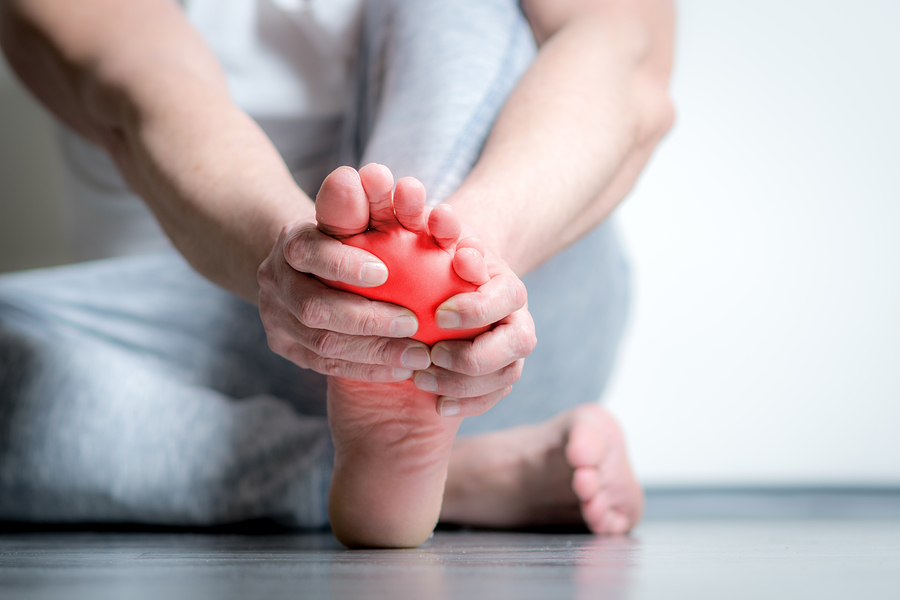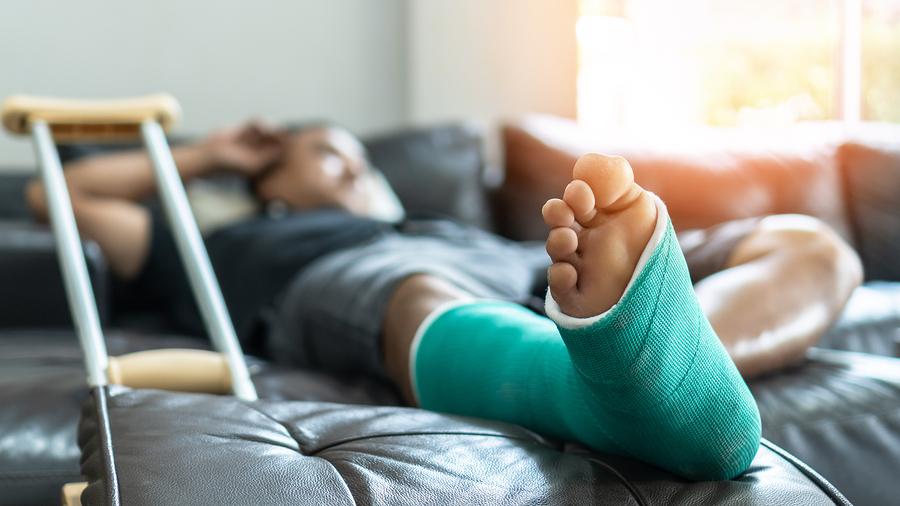Insight into Pain Reduction Techniques
We are all well aware of how the U.S. military has fought hard in Iraq and Afghanistan. The work load is high in such states, given the stressful environment and limited facilities. Both of these result in different kinds of health problems in military men, the commonest being chronic muscular pains. Yet, very little has been done to help U.S. military veterans who have returned from Iraq or Afghanistan, to manage the incapacitating chronic pain that they are left with. A new study now shines light on a potential solution for military members and others!
Researcher Matthew Bair, M.D. from the VA and Regenstrief Institute, lead a randomized controlled ESCAPE trial (Evaluation of Stepped Care for Chronic Pain). He noted-
- Due to pain, daily chores become very difficult.
- Pain interferes with day to day work.
- Pain hampers our ability to perform the best.
- Pain is disabling and a critical health issue in numerous veterans.
- As a result of suffering from chronic pain, there were lengthy deployments.
- Medical treatment was able to provide some relief, but it was incomplete and lasted for only a short time.
- Not much has been achieved by current pain medications.
The trial participants-
Chronic pain of moderate to severe intensity lasting for a duration of more than 3 months was common to all veterans enrolled in the study. Two-thirds of the study patients had served in the army, 88 percent were males, and 77 percent were white. The mean age was slightly under 37 years.
The Solution-A new study by researchers from the Richard L. Roudebush from the VA Medical Center in Indianapolis, reports that a ‘stepped-care’ strategy improved function and decreased the pain severity, producing at least a 30 percent improvement in pain-related disability.
ESCAPE studied 241 veterans of Operations Enduring Freedom, Iraqi Freedom and New Dawn who suffer from musculoskeletal pain of the back, knee, neck or shoulder. Dr. Bair and colleagues developed a two-step program combining analgesics, self-management strategies and cognitive behavioral therapy. In the ESCAPE study, the pain was reduced by 30 percent and the reduced-pain period persisted for nine long months. This is clinically extremely important for patients.
2 step therapy-
The first step of the therapy was 12 weeks of treatment with common pain killers like acetaminophen, naproxen sodium, opioids, etc. Along with this, the veterans were taught pain self-management strategies such as deep breathing and other relaxation techniques.
The second step included 12 weeks of cognitive behavioral therapy for both pain and depression drawing upon evidence-based psychological treatments.
Nurse care managers provided the ESCAPE program to the veterans. The nurses supported them during periods of deployment, helped them to counter maladaptive thought. They would also explain to the veterans that they could not undertake difficult physical activities that they had enjoyed before deployment. They needed to find a substitute which is less rigorous, such as swimming.
Veterans who were given the two-step ESCAPE program showed –
- an increase in Function
- reduction in the intensity of pain
- better mood
- improvement in interpersonal relationships and social activity
- enhanced capacity to work
- good sleep and enjoyed life much more than before
Educational handouts on musculoskeletal pain were provided to study patients randomized to usual care. They also received advise from their physicians and discussed their pain with them. Nonstop medications, clinic visits, specialty recommendations and other care as usual were given to these patients.
This 2 step pain management strategy can also be used by elderly persons suffering from chronic pain, who aren’t receiving significant relief from medications, surgery, etc.
Contributed by Dr. Rachita Narsaria, MD
Reference:
Indiana University. “Two-step treatment improved function, decreased pain severity in veterans.” ScienceDaily. ScienceDaily, 9 March 2015. <www.sciencedaily.com/releases/2015/03/150309123948.htm>.
Cigarettes May Inhibit Inflammation Treatments
Axial spondyloarthritis, also known as AxSpa, is a chronic inflammatory disease of axial or central skeleton. It mainly affects the spine and sacroiliac joint in pelvis. The most common symptom of axial spondyloarthritis is lower back ache and in severe cases, it can cause complete fusion and rigidity of the spine. Axial spondyloarthritis commonly occurs more often in males and in second or third decades of life.
Various studies have shown that smokers with early axial spondyloarthritis have earlier disease onset and more disease activity, poor functions and health related quality of life, damage and inflammatory changes. It was observed in different studies that cigarette smoking was independently associated with earlier onset of axial spondyloarthritis, increased axial structural damage on Magnetic resonance imaging (MRI) and radiograph.
A new research which was published online in Annals of the Rheumatic Disease revealed that smoking also hampers the response to biological drugs which are used for treatment of axial spondyloarthritis.
In Swiss Clinical Quality Management Cohort (SCQMS) between the periods of 2005 to 2014 a study was conducted to analyze the response of less than 700 patients with diagnosis of axial spondyloarthritis who were being treated with tumor necrosis factor (TNF) inhibitors, a class of biological drugs. The subjects were divided into two groups- smokers and non-smokers. Out of 700, two third (62%) were involved in cigarette smoking and 38% of them were non-smokers.
The treatment responses of these subjects were analyzed based on Bath Ankylosing Spondylitis Disease Activity Index (BASDAI) and Ankylosing Spondylitis Disease Activity Score (ASDAS). These are standard diagnostic tests used by rheumatologist to measure the effectiveness of drug therapy in axial spondyloarthritis cases. The BASDAI is measured on a scale of 1 to 10 (1-no symptoms and 10-symptoms worsened) on the basis of six questions which include Fatigue, Spinal pain, Arthralgia, inflammation, and morning stiffness duration and severity. There were other factors which would influence the score of BASDAI like age, sex, weight, exercises etc. which were all considered while analyzing the results. The complete history and smoking status were available for nearly 70 % of the total subjects taken into the study (<500).
In comparison with non-smokers, the subjects who smoked throughout the treatment showed poor response to the treatment given and lesser improvement in their BASDAI and ASDAS scores. The subjects who had higher levels of inflammatory markers (C-reactive protein [CRP]) by the end of the study as compared to the beginning of the study showed noticeable differences. Overall only 10% to 20 % of current smokers achieved a 50 % reduction in BASDAI score even after 1 year treatment.
The researchers concluded that cigarette smoking hampers the response of tumor necrosis factor inhibitor but how, was not clear from the study. The study revealed that cigarette smoking may increase the CRP or interfere with neural processing of sensory information or starve patients of oxygen there by increasing the pain. Consider quitting smoking to improve your health and reduce your risk of back pain.
References:
- Ciurea, A. Scherer, U. Weber, P. Exer, J. Bernhard, G. Tamborrini, M. Riek, R. B. Muller, B. Weiss, M. J. Nissen, R. Kissling, B. A. Michel, A. Finckh. Impaired response to treatment with tumour necrosis factor inhibitors in smokers with axial spondyloarthritis. Annals of the Rheumatic Diseases, 2015
- Chung HY,Machado P, van der Heijde D, D’Agostino MA, Dougados M. Ann Rheum Dis. 2012 Jun; 71(6):809-16. doi: 10.1136/annrheumdis-2011-200180. Epub 2011 Oct 11.
- The above story is based onmaterials provided by BMJ-British Medical Journal, Pubmed and Wikipedia
Protecting Your Immune System
Keeping your immune system functioning at its best is something you may be more concerned with recently! With the additional threat to health posed by the current global health crisis, your health may be something you are now looking to take greater control of.
Hygiene For Disease Prevention
As the whole world begins to adjust to a new sense of normal amid the coronavirus pandemic, the importance of good personal hygiene has never been more apparent.
Plantar Fasciitis: Causes and Treatment
If you are someone who goes walking, hiking, or running often, then you will likely have heard of — or perhaps even experienced — plantar fasciitis.
An Introduction To Orthopedic Prosthetics
Prosthetics are designed to replace body parts that may have been lost for a number of reasons. Sometimes the prosthetic is used primarily to give the appearance of the body part in question, but in many instances it can also help the patient regain a certain level of function.
Winter Wellness Tips
Staying healthy through the winter is something that you may find requires just a little bit more care and attention than the rest of the year. With colds and flu occurring at a higher rate, and less opportunity to get out for sunshine and exercise, it becomes much more important to make sure you are keeping yourself as healthy as possible.
Orthopedic Bone Graft
A bone graft is a medical technique that is sometimes used to correct issues with the bones and the joints.
Put The Health Of Your Bones First This Winter
When the colder seasons start to come around, it can be easy to let go of your healthy living aspirations. It may become harder to motivate yourself to get outdoors to exercise, and it can certainly be more tempting to choose comfort foods over nutritious dishes.
Statins and Bone Health
Statin drugs are of great benefit to those who need to lower their cholesterol levels. However, new research has shown that this type of medication could have a detrimental impact on the health of the bones.














